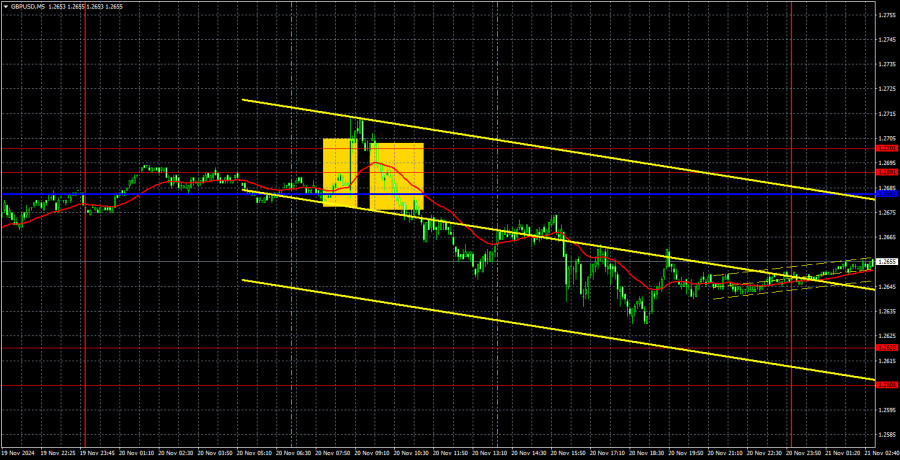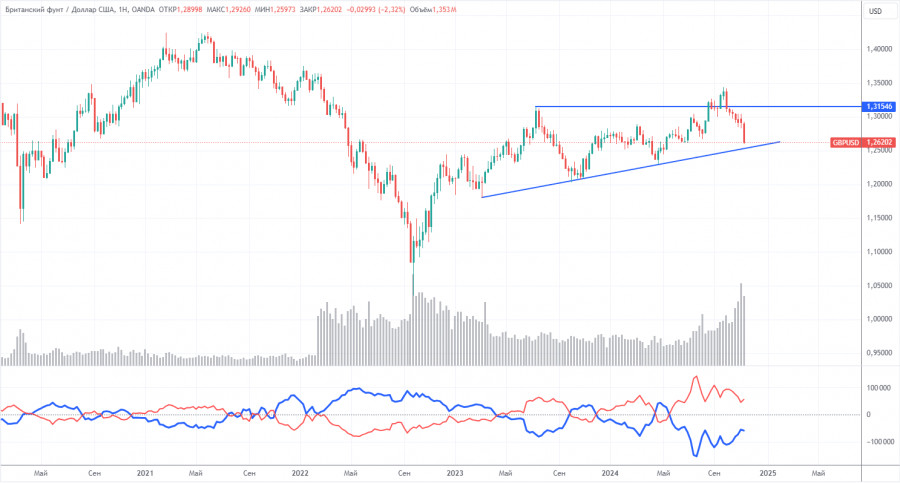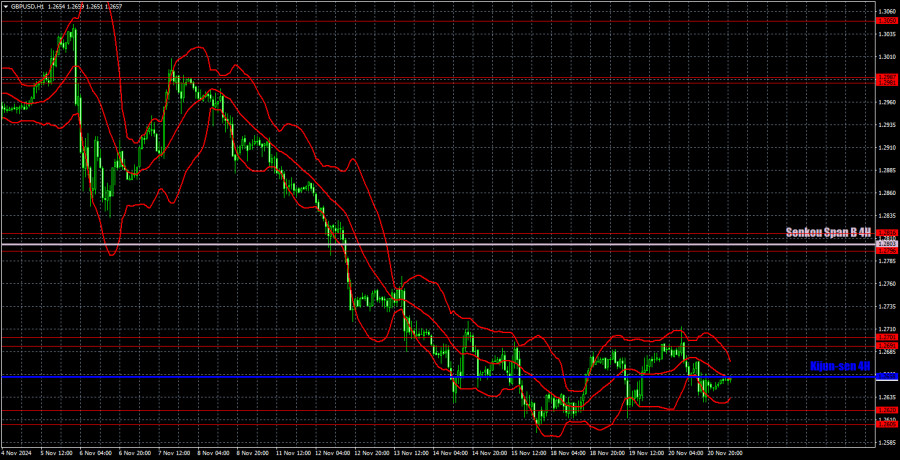

The GBP/USD currency pair continued trading flat on Wednesday. Unlike EUR/USD, however, the flat in GBP/USD is more defined, with clear boundaries. Over the past week, price movements have oscillated between 1.2605–1.2620 and 1.2691–1.2701. The pair consistently tests the upper or lower boundary, providing traders with potential entry points. However, it's worth noting that indicators like Ichimoku lines lose their strength in a flat market.
Wednesday's only notable macroeconomic event was the UK Consumer Price Index (CPI). This report showed an annual inflation rate increase to 2.3%, slightly above expectations. Core inflation also rose to 3.3%, contrary to forecasts of a decline to 3.1%. This confirms Bank of England Governor Andrew Bailey's concerns about accelerating inflation. Consequently, the BoE will likely reduce rates even slower—a positive signal for the pound sterling.
However, Wednesday demonstrated that even strong economic data cannot significantly boost the pound. Despite having solid grounds for growth, the pair failed to break through the upper boundary of the horizontal channel, even when it was within proximity. This reinforces the likelihood of a sustained medium-term decline rather than a corrective rise.
Following the inflation report, the pair broke above the 1.2691–1.2701 range among trading signals. However, this signal turned out to be false. The price fell below this range within an hour, forming a signal aligned with the inflation report, which proved accurate. Subsequently, the pair dropped by 40 pips. However, Wednesday's price movements were neither easily predictable nor consistent.
COT Report
The COT reports on the British pound show that commercial traders' sentiment has been highly volatile in recent years. The red and blue lines representing the net positions of commercial and non-commercial traders frequently intersect and usually hover near the zero mark. The most recent downward trend coincided with the red line being below zero. Currently, the red line is above zero.
According to the latest COT report, the non-commercial group closed 700 BUY contracts and 11,700 SELL contracts. As a result, the net position of non-commercial traders grew by 11,000 contracts over the week. While the market is not rushing to sell the pound sterling in the medium term, the movements of the past six weeks are encouraging.
The fundamental backdrop still provides no basis for long-term pound purchases, and the pound has a realistic chance of resuming its global downtrend. However, on the weekly timeframe, there is an upward trendline. Until this trendline is broken, long-term expectations of a decline in the pound remain speculative. For now, the pound continues to demonstrate significant resilience against the dollar.
GBP/USD 1-Hour Analysis
The GBP/USD pair maintains a downward bias on the hourly timeframe. The previous upward trend has been invalidated, leaving further declines in the British currency as the most likely scenario, particularly sharp and prolonged ones. The recent correction turned into a flat range and has already ended. A new correction has started, supported by the 1.2605–1.2620 area, but it still looks more like a flat. There are no fundamental reasons to expect a significant rally in the pound sterling, and the inflation report failed to provide any meaningful support.
For November 21, we highlight the following important levels: 1.2429-1.2445, 1.2516, 1.2605-1.2620, 1.2796-1.2816, 1.2863, 1.2981-1.2987, 1.3050. Senkou Span B (1.2803) and Kijun-sen (1.2658) lines can also be sources of signals. Ichimoku indicator lines may shift throughout the day and should be monitored when generating signals. Place Stop Loss orders at breakeven once the price moves 20 pips in the desired direction to protect against potential losses from false signals.
Thursday's economic calendar in the UK and the US is light, with only a few minor reports expected. It is unlikely to happen today because Wednesday's much more significant data failed to break the horizontal channel. The pair is likely to remain within the same range.
Chart Explanations:Support and resistance levels: thick red lines around which movement may end. They are not sources of trading signals.
Kijun-sen and Senkou Span B lines: Ichimoku indicator lines transferred from the 4-hour to the 1-hour timeframe. These are strong lines.
Extreme levels: thin red lines where the price previously rebounded. They are sources of trading signals.
Yellow lines: Trend lines, trend channels, and other technical patterns.
Indicator 1 on COT charts: The net position size for each category of traders.